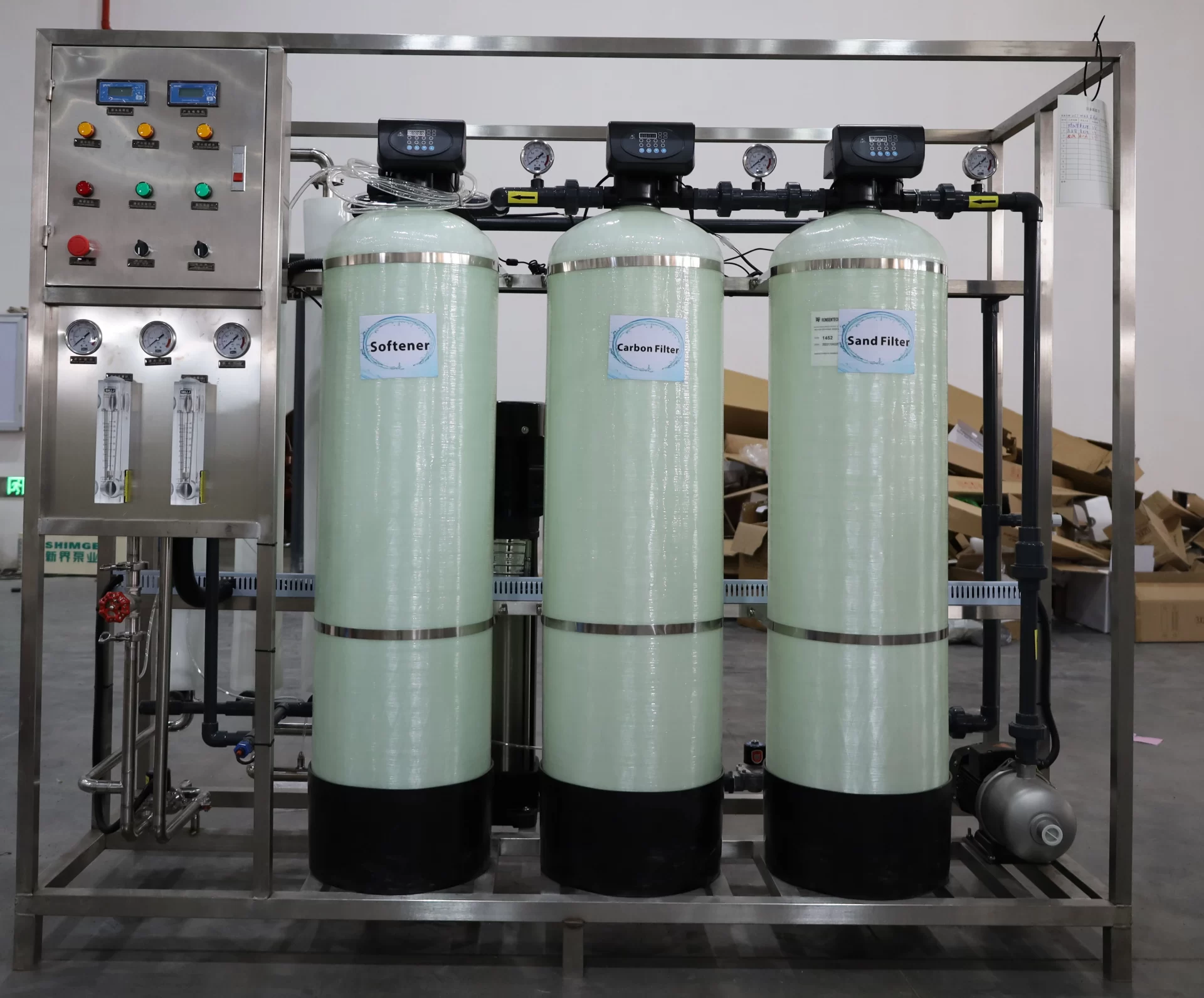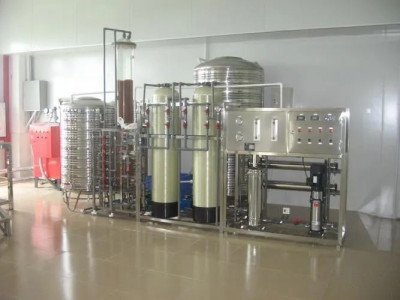Filtros de areia, filtros de carbono ativados, filtros de segurança e seleção do modelo de tanque de resina FRP depende principalmente do fluxo de água do terminal RO para o equipamento RO para calcular a taxa de utilização do fluxo de pré -tratamento da água. Taxa geral de utilização de água de RO geral de cerca de 50 – 60%, sistemas grandes em 75%, até 80%. Exemplos de questões relacionadas:
Supondo que uma produção de água RO de 3 toneladas / h, a taxa de recuperação de 75%, a produção de água pré-tratamento de 4 toneladas / h.
Filtro de areia
◆ Taxa de fluxo de projeto geral do filtro de areia Tomar 8–10m / h, aqui a produção de água 4 toneladas / h, de acordo com q = sv
De acordo com Q = SV, q fluxo, S Tank Seção Transversal Área, Vancos de Fluxo de Projeto V, S = π R^2 Diâmetro do tanque D = 2R], você pode calcular o diâmetro do tanque e a altura pode ser verificada no manual do fabricante.
Filtro de carvão ativado
◆ Filtro de carbono ativado Taxa de fluxo de projeto geral para levar 10–12m / h, onde a produção de água de 4 toneladas / h, de acordo com Q = SV [q Fluxo, S Tank Seção Transversal Área, Viência do Projeto V, a produção de água de 4 toneladas / h, S = π R ^ 2 diâmetro d = 2r] pode calcular o diâmetro do lata, a altura do manual do fabricante.
Amaciador de água
◆ Taxa de fluxo de projeto geral do amaciante para levar 15–20m / h, onde a produção de água de 4 toneladas / h, de acordo com Q = SV [q Fluxo, S Tanque Sectional Area, Vanela de fluxo de projeto V, S = π R ^ 2 Diâmetro do tanque D = 2R] pode ser calculado no diâmetro do tanque, a altura do manual do fabricante para verificar.
Vale a pena notar que: de acordo com o algoritmo acima, calcular o tamanho dos três tanques FRP não é o mesmo.
Para tornar o equipamento mais bonito, geralmente escolhemos o maior tanque FRP de tamanho para atingir a taxa de fluxo.
Mas existem muitos fornecedores no mercado é escolher um tanque FRP menor, o motivo é reduzir custos e economizar espaço no design para melhorar a taxa de fluxo de projeto, para que o desempenho do equipamento se deteriore.




